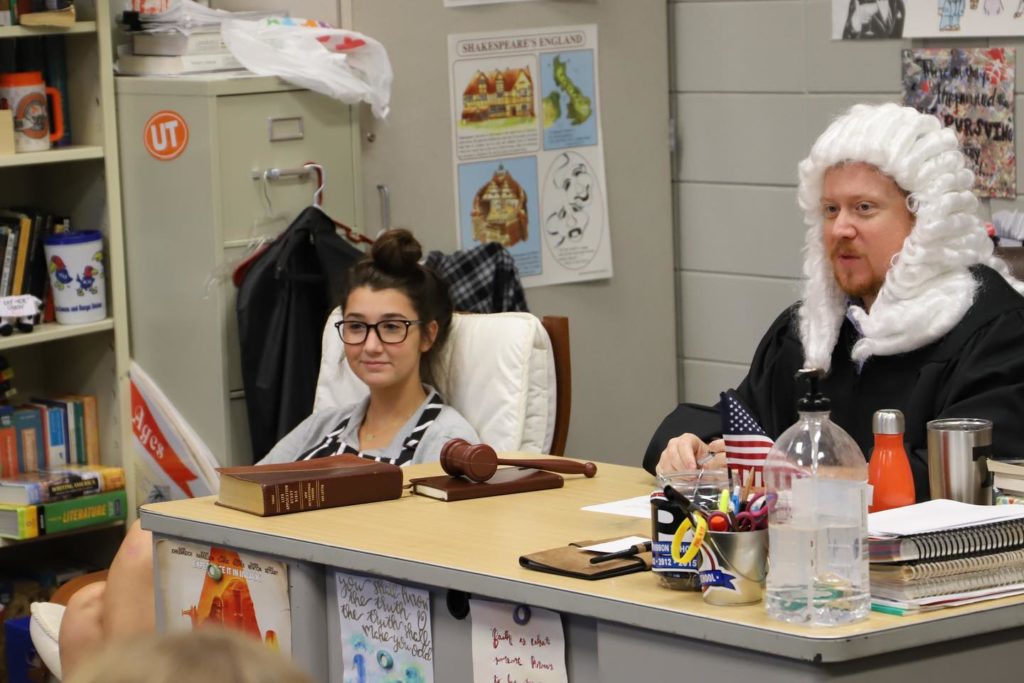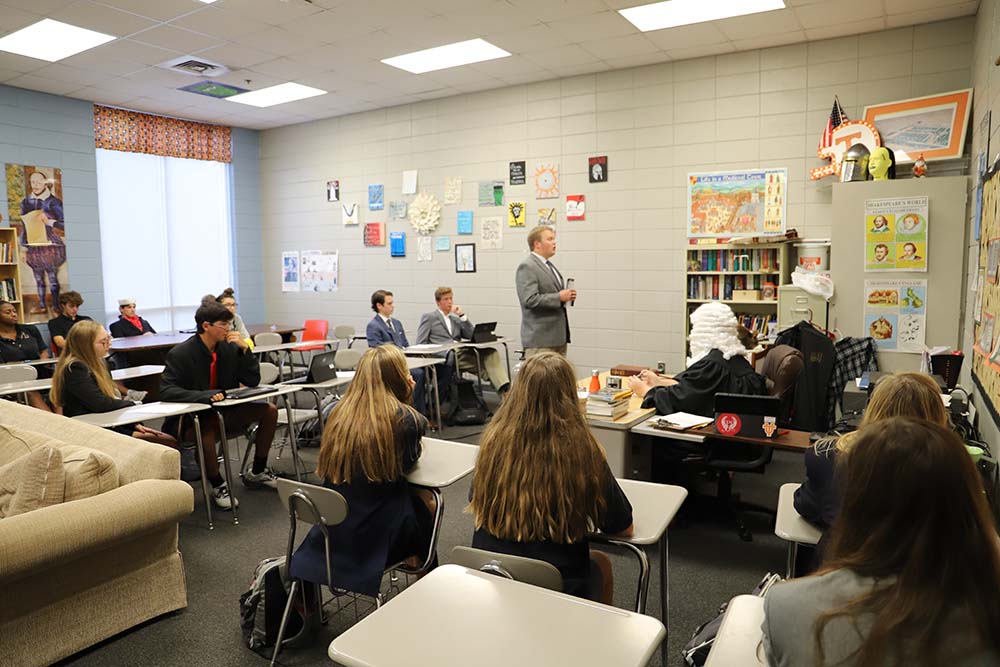
Mr. Katzer’s AP Literature class is not your typical class – especially when it comes to their study of Mary Shelley’s Frankenstein. That’s when the monsters head to court! To wrap-up their study of Mary Shelley’s Frankenstein, students hosted a mock-courtroom trial, complete with costumes, of Victor Frankenstein.
About the Trial
In the trial, Victor is accused of causing the deaths of the other characters in the novel. Each student plays the role of a character from the novel, a lawyer, or a member of the jury for the trial.
After choosing the role they would like to play in the trial, they each complete a writing assignment analyzing their chosen character or the character of Victor Frankenstein. Students playing the role of lawyer work together to create an argument and compose questions for the witnesses.
On the day of the trial, Mr. Katzer and his students turn the classroom into a courtroom! The “lawyers” give an opening statement, call “witnesses” to the stand for questioning, and after closing arguments, the “jury” deliberates and gives a verdict. Following this, students write a brief post-trial reflection on their experience.

Learning Objectives
The assignment requires students to focus on the function of character in a work of literature (including details surrounding the character and the character’s motivations) and to write analytically. Students also work on their presentation and public speaking skills. These are three of the major skills covered in Mr. Katzer’s AP Literature class. Incorporating them into the trial gives a unique perspective on the need for these skills.
Response
Mr. Katzer says he has received great response. “It’s an activity I’ve seen other teachers who teach Frankenstein use. However, I only recently incorporated it into my own classroom, and I’m glad I did. It’s a high-interest activity for the students that still allows me to gauge how the class’s analytical skills are developing.”
He hopes the students take with them a deeper appreciation for the novel as well as new ways of thinking about characters and confidence in public speaking.
